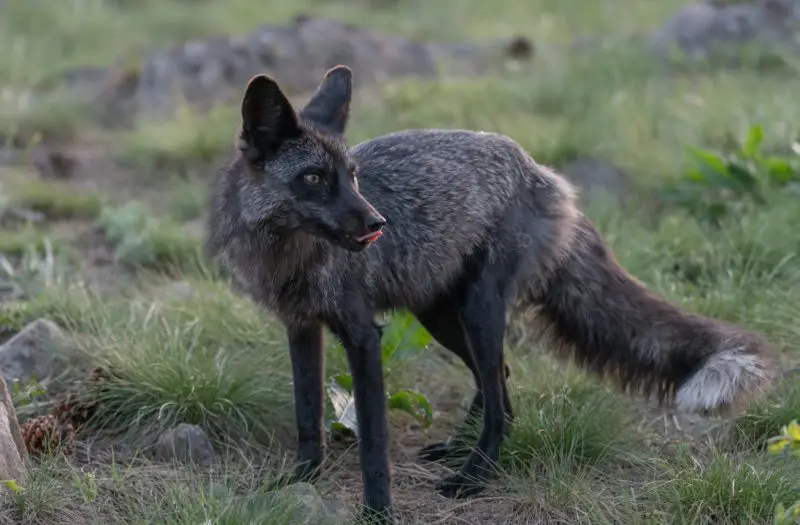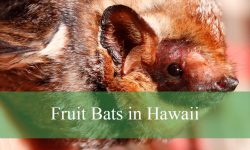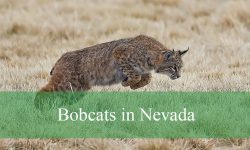Amid the snow-capped peaks of Colorado’s Rockies, where crisp alpine winds sweep through ancient pine forests and the scent of juniper lingers in the air, there exists one of nature’s most elusive marvels—the black fox. Locals speak of them in hushed tones, travelers report fleeting encounters, and wildlife photographers dream of capturing even a single image. For generations, these mysterious foxes have been woven into Colorado’s natural and cultural tapestry, symbolizing both beauty and enigma.
But what exactly are black foxes? Are they a separate species, a rare mutation, or merely myths whispered through mountain valleys? To uncover the truth, we must look beyond legends and into the world of genetics, adaptation, and ecology—where science meets folklore in the heart of the Centennial State.
What Is a Black Fox?

The Science Behind the Color
Despite its distinct and captivating appearance, the black fox is not a separate species. It’s a rare color variation of the red fox (Vulpes vulpes), the most widespread carnivore on the planet. The black coat results from a genetic mutation known as melanism, caused by the MC1R gene. This mutation boosts the production of melanin, the dark pigment responsible for the deep, jet-black hue of their fur.
In some individuals, this melanism is complete, covering the entire body with an inky shine that shimmers silver in sunlight. Others display mixed hues—a blend of reddish tones along the legs and neck or silver streaks across the shoulders and back. The famous “silver fox” variant is a milder form of melanism, showing a fascinating spectrum between red and black.
More Than Just a Color
This rare coloration has practical implications, too. In dense forests or shaded terrain, the black coat provides a degree of camouflage, blending seamlessly into dim underbrush. But in open snowy regions—common in Colorado’s mountains—it makes them more visible to predators and prey alike, explaining why this mutation remains uncommon in the wild.
How Rare Are Black Foxes in Colorado?
Black foxes represent less than 1% of all red fox populations in North America, making them exceptionally rare. In Colorado, their presence has been sporadically documented across regions that combine forest cover, open meadows, and proximity to water sources.
Confirmed sightings and photographic evidence have been reported in:
- Rocky Mountain National Park, near Estes Park
- The San Juan Mountains, especially near Telluride and Durango
- Boulder County and the Front Range foothills
- Pikes Peak and Manitou Springs region
- Western Slope, including areas near Grand Junction
Because of their rarity, even seasoned wildlife biologists can go years without spotting one. Most encounters are brief—an early morning flash of movement through frost, a dark silhouette crossing a meadow at dawn.
The Genetic Mystery of Melanism
How Melanism Works
Melanism is a fascinating example of genetic variation within species. In foxes, it’s triggered when the MC1R gene is altered, causing excessive melanin production. This process masks red and yellow pigments, resulting in the rich, black coloration seen in some individuals. Interestingly, this same genetic mechanism appears in leopards, jaguars, squirrels, and even snakes.
What’s remarkable is that melanism doesn’t just affect fur—it can influence eye and skin tone, giving black foxes striking amber or golden eyes that glimmer in the dark. The genetic inheritance is recessive, meaning both parents must carry the mutation for their offspring to express it, explaining the extreme rarity of the black fox.
Evolutionary Advantage or Coincidence?
Scientists have debated whether melanism provides a survival advantage. Some evidence suggests black foxes may benefit from improved concealment in shaded forests, offering better opportunities to stalk prey or hide from predators. Others argue it’s a neutral mutation, persisting by genetic chance rather than environmental benefit.
In Colorado, where ecosystems range from snowy peaks to dry plains, the advantage of a dark coat may vary dramatically depending on location—potentially explaining why black foxes remain scattered and uncommon across the state.
Where Are Black Foxes Found in Colorado?
Colorado’s Diverse Fox Habitats
Colorado’s varied geography—from the rugged Rocky Mountains to the grassy plains of the east—creates a mosaic of habitats for red foxes. Black foxes, being genetically identical to red foxes, occupy similar territories but tend to favor forest edges, alpine meadows, and foothill regions where cover is abundant.
The Front Range corridor between Boulder, Fort Collins, and Colorado Springs has reported several black fox sightings, often near wooded neighborhoods and open parklands. Meanwhile, the San Juan and Gunnison regions provide vast wilderness areas where black foxes may roam largely undisturbed.
Urban Sightings and Adaptability
A surprising number of reports come from suburban neighborhoods bordering natural areas. Foxes—red or black—are remarkably adaptive. In towns like Boulder, Golden, and Colorado Springs, residents occasionally spot black foxes at dusk, prowling near trash bins or crossing quiet streets. Their ability to coexist near humans mirrors the adaptability of their red cousins, proving that intelligence and flexibility, not just color, determine survival.
The Myths and Legends of Colorado’s Black Fox
Native American Symbolism
Long before scientific explanations, Native American tribes across the West held the fox as a powerful spiritual symbol. For the Ute, Arapaho, and Cheyenne peoples, the fox represented cleverness, adaptability, and wisdom. The black fox, however, carried even deeper spiritual meaning—it was seen as a spirit guide, a messenger between worlds, or a guardian that appeared in times of transition.
In many legends, encountering a black fox symbolized transformation and mystery. Its dark coat embodied the unseen, the mystical side of nature that humans could sense but not fully understand. Elders spoke of black foxes as omens—not of doom, but of profound change.
Modern Superstitions and Folklore
Today, the black fox continues to straddle the line between science and superstition. In some rural Colorado communities, seeing one is said to bring good luck, a blessing of protection or prosperity. Others interpret it as a warning—a sign to tread carefully or expect major life changes.
Stories circulate among hikers and ranchers: of a black fox crossing the road before a snowstorm, or appearing near a cabin the night before an important decision. Whether coincidence or destiny, such stories keep the mystique alive across generations.
Behavior and Ecology
Typical Fox Behavior
Black foxes behave just like their red counterparts. They are solitary, nocturnal hunters, active mainly during dawn and dusk. Highly intelligent and territorial, they mark their range using scent and vocalizations. They often dig dens into hillsides or occupy abandoned burrows made by badgers or groundhogs.
During winter, when prey becomes scarce, foxes demonstrate remarkable resourcefulness—scavenging carrion, caching extra food, and even hunting under snow using their acute hearing to locate small mammals moving beneath.
What Do Black Foxes Eat?
Foxes are opportunistic omnivores. Their diet includes:
- Small mammals (mice, voles, rabbits)
- Birds and eggs
- Insects, beetles, and grasshoppers
- Wild berries, apples, and other fruits
- Occasionally carrion or human food scraps
In urban areas, they may scavenge from compost bins or bird feeders. This flexible diet allows foxes to thrive from the high alpine tundra to suburban backyards.
Identifying a Black Fox
Physical Features
A black fox can be identified by:
- Jet-black or charcoal-colored fur, sometimes with silver highlights
- A white-tipped tail, a key red fox feature
- Golden or amber eyes with intense gaze
- Subtle reddish tones under sunlight along the chest or limbs
Some individuals, known as cross foxes, display a black “cross” pattern on their shoulders and back, blending red and black fur—a testament to nature’s artistic diversity.
Distinguishing from Other Animals
Black foxes are often mistaken for:
- Coyotes, which are larger and lack the white-tipped tail
- Gray foxes, which have salt-and-pepper coats and climb trees more easily
- Domestic dogs, which lack the narrow, pointed snout and agile movement
The fox’s elegant gait, bushy tail, and sharp curiosity are unmistakable once you know what to look for.
Sightings and Recorded Reports
Black fox sightings in Colorado are so infrequent that each one becomes a local event. Wildlife photographers and hikers have shared rare footage in recent years:
- In Rocky Mountain National Park (2023), a photographer captured a black fox crossing a snowy meadow at sunrise.
- Boulder County (2022) residents recorded one scavenging near a compost bin during winter.
- In Durango, a black fox was spotted darting across a mountain trail after dusk.
These reports help biologists map potential genetic clusters, suggesting small, isolated populations may persist in western and central Colorado.
Conservation and Protection
Legal Status
Since black foxes are not a separate species, they are governed under Colorado’s red fox regulations. Hunting and trapping are allowed under specific permits, though melanistic foxes are rarely targeted. Many people who encounter them recognize their rarity and choose to observe rather than harm them.
Conservation Efforts and Public Awareness
Wildlife organizations, including Colorado Parks and Wildlife (CPW), promote education and coexistence through outreach programs. Citizens are encouraged to:
- Secure trash bins and pet food
- Avoid feeding foxes to prevent dependency
- Report sightings for ecological tracking
This data helps researchers understand how color variations, like melanism, influence survival and distribution.
Why Are Black Foxes So Rare?
Genetic Probability
Melanism is a recessive trait, requiring both parents to carry the gene. Because the mutation is rare in the overall population, the odds of two carriers mating are extremely low. This makes each black fox genetically exceptional—a living symbol of evolutionary chance.
Environmental Selection
In Colorado’s snowy winters, a dark coat can become a disadvantage. Prey can spot them easily, and their visibility to predators increases. Natural selection therefore favors red or lighter-colored foxes in open or wintry regions, keeping the black morph rare in mountain ecosystems.
Tips for Spotting a Black Fox in Colorado
If you dream of witnessing a black fox in the wild, patience and respect are vital.
Here are expert wildlife-watching tips:
- Visit during dawn or dusk, when foxes are most active.
- Use binoculars or telephoto lenses—never approach too closely.
- Stay quiet and avoid sudden movements.
- Record sightings responsibly (time, location, behavior).
- Report observations to Colorado Parks and Wildlife to support research.
Remember, every sighting adds valuable information to the state’s ecological record.
Fun Facts About Colorado’s Black Foxes
- They can sprint up to 30 miles per hour when hunting or evading predators.
- Their dense fur insulates them through sub-zero alpine nights.
- Kits (baby foxes) are born blind and fully dependent on their mothers for about a month.
- Historically, black fox pelts were prized in the fur trade for their shimmering silver sheen.
- Their eerie night calls can resemble human screams—fueling ghostly folklore across mountain towns.
The Black Fox and Colorado’s Ecology
Role in the Ecosystem
Black foxes, like all foxes, are crucial to ecosystem balance. They regulate rodent populations, protecting crops and grasslands from overgrazing. As omnivores, they disperse seeds through droppings, contributing to forest regeneration.
Their presence also supports the food web, serving as prey for eagles, coyotes, and mountain lions—a reminder that every species plays a vital part in Colorado’s natural harmony.
Threats to Survival
Major threats include:
- Habitat loss due to development and urban expansion
- Vehicle collisions, especially in foothill regions
- Poisoning from rodenticides used in pest control
These hazards underscore the importance of public awareness and responsible coexistence between humans and wildlife.
FAQs About Black Foxes in Colorado
1. Are black foxes dangerous?
No. They are shy and avoid humans. Encounters are typically brief and harmless.
2. Can you keep a black fox as a pet in Colorado?
No. Keeping wild foxes as pets is illegal and unethical. They require complex care and natural habitats to thrive.
3. Are black foxes endangered?
Not endangered, but very rare. Their populations remain stable within broader red fox numbers.
4. What should I do if I see one?
Enjoy the moment from a distance. Take photos if possible and report the sighting to local wildlife authorities.
5. How long do they live?
In the wild, black foxes live about 3–6 years, though some reach 10 years in protected environments.
Conclusion
The mystery behind Colorado’s black foxes lies in their blend of science, symbolism, and splendor. They embody nature’s unpredictability—born from a genetic twist yet thriving amid the rugged landscapes of the Rockies.
Whether glimpsed through pine shadows or remembered in folklore, the black fox reminds us that even in an age of data and discovery, some wonders remain untamed. They are living echoes of Colorado’s wild soul, shimmering between myth and reality—proof that nature still holds secrets worth chasing beneath the mountain sky.






